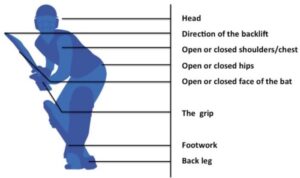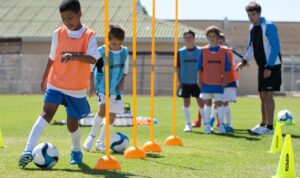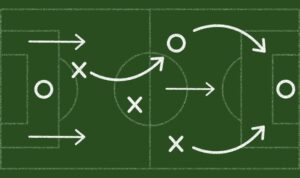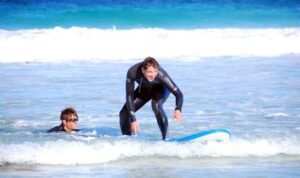Surfing basics are the foundation of riding the waves like a pro. Get ready to dive into the world of surfboards, gear essentials, stances, and paddling techniques, all designed to take your surfing skills to the next level.
Surfboard Basics: Surfing Basics
When it comes to surfing, choosing the right surfboard is crucial, especially for beginners. The type of surfboard you use can greatly impact your learning curve and overall experience in the water.
Types of Surfboards for Beginners
- Soft-Top Longboards: These surfboards are perfect for beginners as they provide stability and buoyancy, making it easier to catch waves and maintain balance.
- Foam Boards: Also known as funboards, these surfboards are versatile and forgiving, allowing beginners to progress and improve their skills.
- Mini Malibu: A hybrid between a longboard and a shortboard, the Mini Malibu offers the best of both worlds for beginners looking to transition to more advanced surfing.
Key Features of a Beginner-Friendly Surfboard
- Volume: A higher volume surfboard provides more stability and floatation, ideal for beginners learning to paddle and catch waves.
- Length: Longer surfboards are easier to paddle and offer better stability, making them perfect for novice surfers.
- Soft-Top: Surfboards with a soft-top construction are safer for beginners, reducing the risk of injury while learning to surf.
Choosing the Right Surfboard
- Consider Your Skill Level: Beginners should opt for longer, wider surfboards with high volume to make learning easier.
- Assess Wave Conditions: Choose a surfboard that matches the wave conditions of the beach you’ll be surfing at, ensuring a smoother learning process.
- Get Professional Advice: Consult with surf shop experts or instructors to get recommendations on the best surfboard based on your skill level and surfing goals.
Surfing Gear Essentials
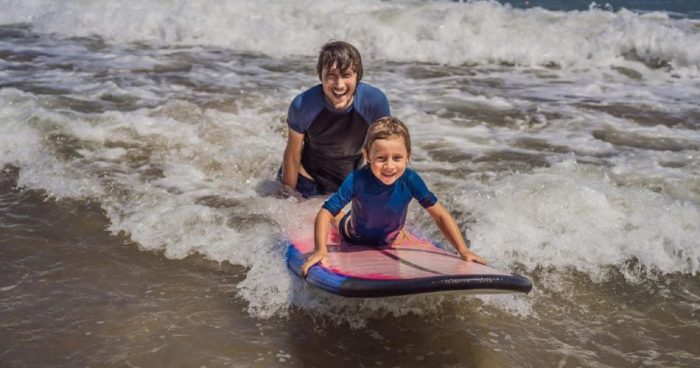
When hitting the waves, it’s crucial to have the right gear to ensure a safe and enjoyable surfing experience. Let’s dive into the essential gear every surfer should have in their arsenal.
Leash for Safety, Surfing basics
- Wearing a leash is non-negotiable when surfing. It keeps your board attached to you, preventing it from drifting away in case of a wipeout.
-
Always make sure your leash is securely fastened to your ankle or leg to avoid losing your board and having to swim back to shore.
Importance of Surfboard Wax
- Using wax on your surfboard is essential for maintaining a strong grip on the board while riding the waves.
-
Without wax, the board can become slippery, causing you to lose balance and potentially fall off.
- Make sure to apply wax evenly across the surface of the board to ensure maximum traction.
Surfing Stance and Positioning
When it comes to surfing, your stance and positioning on the board play a crucial role in your ability to catch waves, maintain balance, and ride smoothly along the face of the wave.
The proper stance for surfing involves positioning your feet shoulder-width apart, with your front foot angled slightly towards the nose of the board and your back foot positioned near the tail. This stance helps you maintain stability and control while riding the waves. Balance is key in surfing, and having the right stance can greatly impact your ability to stay upright on the board.
The Significance of Positioning for Catching Waves
Proper positioning on the surfboard is essential for catching waves effectively. When paddling out to the lineup, it’s important to position yourself correctly on the board to maximize your speed and agility in catching incoming waves. By positioning yourself closer to the front of the board, you can easily paddle into waves and start riding them before they break.
Tips for Improving Balance and Stability
- Practice proper stance: Work on finding the right balance between your front and back foot to maintain stability on the board.
- Engage your core: Keep your core muscles engaged to help with balance and stability while riding a wave.
- Focus on a fixed point: Pick a point on the horizon to look at while surfing to help maintain balance and keep your body aligned.
- Stay low: Bend your knees slightly to lower your center of gravity and improve stability on the board.
- Practice regularly: The more you surf, the better your balance and stability will become, so keep practicing to improve your skills.
Paddling Techniques

Surfing beginners need to master the art of paddling to catch waves effectively. Proper paddling technique not only helps in getting you out to the lineup but also plays a crucial role in catching waves at the right time.
Correct Paddling Techniques
- Position yourself properly on the surfboard, lying flat with your chest near the center for better balance.
- Use your arms to paddle with cupped hands, reaching as far forward as possible with each stroke.
- Kick your feet gently to assist in propulsion and help maintain stability on the board.
- Avoid dragging your hands in the water, as it creates unnecessary drag and slows you down.
Importance of Efficient Paddling
Paddling efficiently allows surfers to catch waves before they break, giving them more time to pop up and ride the wave.
- Proper paddling technique helps in positioning yourself correctly in the lineup, increasing your chances of catching waves.
- Efficient paddling also conserves energy, allowing you to surf longer and catch more waves during each session.
Building Paddling Strength and Endurance
- Practice paddling regularly in flat water to build arm and shoulder strength.
- Incorporate swimming and paddle drills into your routine to improve paddling endurance.
- Focus on maintaining a consistent paddling rhythm to maximize efficiency and speed in the water.
- Stay hydrated and take breaks when needed to prevent fatigue during longer surfing sessions.
